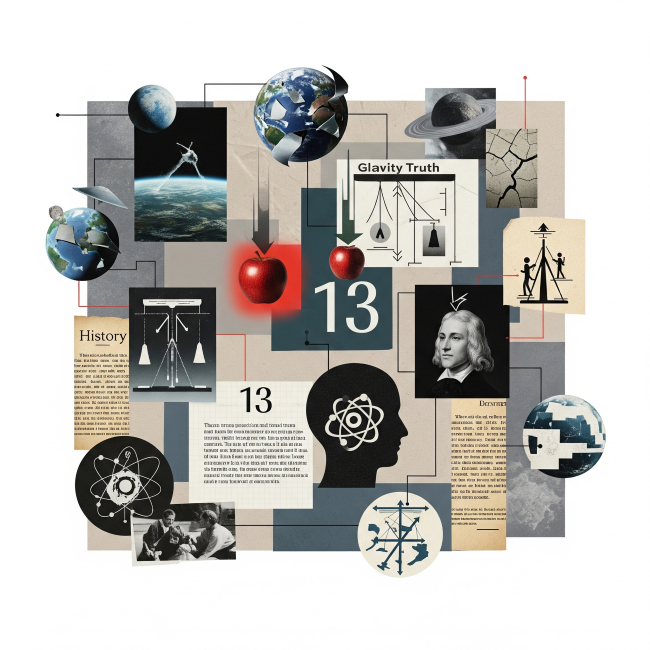1986 Cameroonian Disaster : The Deadly Cloud that Killed Thousands Overnight

The Night the Air Went Still
It began with silence.
Not the usual hush that descends over Lake Nyos after sundown, not the kind where frogs croak lazily and winds whisper through the reeds. This was an unnatural silence. The kind that leaves pain in the ears.
Villagers in Lower Nyos had gone to bed early that night. There was nothing out of the ordinary. The skies were clear, save for a strange pale haze that lingered over the lake as if the clouds had dipped too low. There was no thunder, no tremors, no warning.
However, before war, there was once peace.
By midnight, cattle in the nearby pastures began to collapse. One after another, as if sleep overtook them mid-graze. Chickens slumped off their perches. Dogs whimpered, stumbled, and dropped, their final breath shallow and quick.
It wasn’t until the people started dying that anyone noticed.
Survivors Begin To Rise
Dead cattle and surrounding compounds in Nyos village, Sept. 3, 1986. (Credit: USGS)
Dawn broke over a scene of impossible stillness. Joseph Nkwain stirred in his bed, his head pounding. Something was wrong. His body felt heavy. Every breath ached. He tried to call out for his family. Nothing came out.
Around him, his family lay motionless. Eyes open. Faces twisted in confusion. Void of breath.
He stumbled out of the hut, barefoot, dazed, staggering over bodies; neighbors, friends, animals, all lying crumpled where they had fallen. Some in their homes, some in the fields. This horror was not isolated to Subum.
Reports began to crackle across aging radios as villagers from neighboring hills descended into what had become a valley of the dead.
Reporters in the area described the scene as "looking like the aftermath of a neutron bomb."
By afternoon, the Cameroonian government had dispatched emergency responders and scientists to the scene. What they found was staggering. Over 1,700 people were dead. More than 3,500 livestock lay decimated. Entire villages — Lower Nyos, Cha, Kam, Subum, silenced overnight.
One of the most puzzling aspects was what investigators did not find. There were some sores, but no battle wounds. No signs of struggle. No fire, no flood. No symptoms of disease. The dead looked as if they had just fallen asleep mid-step. It’s like the air just… killed them.
Theories spread quickly. Villagers whispered of ancient spirits, cursed waters, angry gods. Scientists who examined the scene were left with more questions than answers. A gas leak? A terrorist attack?
A secret military experiment gone wrong, or perhaps even right?
When Water Breathes
Image Credit: Unsplash
Days later, limnologist Dr. Haraldur Sigurdsson arrived at Lake Nyos from Iceland. He might not have believed in spirits or curses. Still, what he found was no less haunting.
As he and his team began collecting samples, they noticed something immediately unusual. The lake water bubbled, not from wind or heat, but from something within — as if the entire body were lightly carbonated, like a fizzy bottle of coke.
The deeper they went, the stranger things became. Pressure gauges behaved unpredictably, suggesting enormous forces at work beneath the surface.
At a certain depth, they discovered a distinct boundary in the water column, a sharp line separating warmer surface water from the colder, gas-saturated layers below. It looked like two different lakes stacked one atop the other.
The shoreline told its own story. Fish lay dead along the banks in unnatural numbers, yet the trees and plants nearby stood untouched, vibrant and green. Whatever had happened had been selective — devastating to animals and humans, yet invisible to the environment itself.
When they tested the air, the readings were staggering. Carbon dioxide levels were off the charts.
Slowly, the mystery began to unravel.
The Killer Revealed
What the team pieced together over the following weeks was a phenomenon no one had ever seen on such a deadly scale.
For years, an invisible danger had been growing beneath Lake Nyos. Deep below the surface, carbon dioxide (CO₂)was seeping in from a magma chamber within the Earth’s crust.
In most lakes, such gases are released slowly over time, diffusing harmlessly into the atmosphere.
Lake Nyos, however, was different.
Its unique depth and geography created a natural trap. The CO₂ dissolved into the cold, dense water at the bottom and remained there, held in place by the immense pressure of the water above. Over time, the gas built up silently and invisibly, turning the lake into a massive underground reservoir of suffocating air.
Then, something disturbed the balance.
It might have been a minor landslide, a shift in temperature, or even a heavy rainstorm. No one can say for certain. What is known is that the disturbance allowed the deep, gas-rich water to rise. As it did, the pressure dropped, and the CO₂ rapidly came out of solution — unleashing the deadly cloud that poured over the surrounding villages.
On August 21, 1986, the lake violently turned over in a process called limnic eruption, and a massive cloud of carbon dioxide surged out, heavy and cold, racing down into the surrounding villages. It was invisible, odorless, silent, and deadly. It displaced the oxygen in the air, suffocating every living thing within a 25-kilometer radius.
There was no warning. There was no escape.
The Science Behind The Killer
Image Above: Lake Nyos. Credit: Antonio Costa
To understand how a lake could kill so many people without warning, you need to know about something called a limnic eruption.
Lake Nyos sits in a volcanic area. Deep beneath the ground, there is magma, which is extremely hot, melted rock. Magma comes from inside the Earth and is the same substance that erupts from volcanoes. Even when it doesn’t erupt, it can still affect the land above it.
Over time, this underground magma slowly releases carbon dioxide (CO₂) — a colorless, odorless gas. That gas seeps upward into the lake and dissolves into the cold water at the bottom.
In most lakes, gases like CO₂ escape bit by bit into the air. In Lake Nyos, that didn’t happen. It was like shaking a bottle of soda but never opening it.
Then, something disturbed the balance. Scientists believe it could have been a landslide, heavy rainfall, or a change in temperature. Whatever it was, it caused the gas-filled water at the bottom to rise. As it reached the surface, the pressure dropped — and the CO₂ burst out of the lake, just like foam exploding from a soda bottle.
The lake released a huge cloud of CO₂ into the air, and because the gas is heavier than air, it pushed out the oxygen. People and animals did not suffocate because the gas was toxic in the traditional sense. They suffocated because there was no oxygen left to breathe.
But why did Joseph and others claim they smelt something rotten?
Survivors like Joseph Nkwain were rare. He only lived because he was slightly uphill, and the gas, denser than air, hugged the valley floor. He carries scars from the trauma of waking in a world where everyone else did not. Mr. Nkwain, who woke up 3 hours after the cloud hit, recounted the experience to Dr. E. Shanklin in a Science Direct paper, titled Witness accounts of the catastrophic event of August 1986 at Lake Nyos (Cameroon).
“I could not speak. I became unconscious. I could not open my mouth because then I smelled something terrible ... I heard my daughter snoring in a terrible way, very abnormal ... When crossing to my daughter's bed ... I collapsed and fell. I was there till nine o'clock in the morning (of Friday, the next day) ... until a friend of mine came and knocked at my door ... I was surprised to see that my trousers were red, had some stains like honey. I saw some ... starchy mess on my body. My arms had some wounds ... I didn't really know how I got these wounds ... I opened the door ... I wanted to speak, my breath would not come out ... My daughter was already dead ... I went into my daughter's bed, thinking that she was still sleeping. I slept till it was 4.30 in the afternoon ... on Friday (the same day). (Then) I managed to go over to my neighbours' houses. They were all dead ... I decided to leave ... (because) most of my family was in Wum ... I got my motorcycle ... A friend whose father had died left with me (for) Wum ... As I rode ... through Nyos I didn't see any sign of any living thing”
Nkwain’s perspective can also be corroborated by The Department of Interior’s U.S Geological Survey Report, dated 21st August 1986.
The Aftermath
Lake Nyos reminded the world how thin the veil is between peace and catastrophe, that death does not always come with sound or fire. Sometimes it arrives as a breathless whisper in the night.
Degassing efforts continue at Lake Nyos, involving vertical pipes that siphon CO₂ from the depths and vent it safely above the surface.
Since this tragedy, scientists have identified a few other lakes with similar risk profiles, including Lake Kivu on the Rwanda-DR Congo border.
You may also like...
Super Eagles' Shocking Defeat: Egypt Sinks Nigeria 2-1 in AFCON 2025 Warm-Up

Nigeria's Super Eagles suffered a 2-1 defeat to Egypt in their only preparatory friendly for the 2025 Africa Cup of Nati...
Knicks Reign Supreme! New York Defeats Spurs to Claim Coveted 2025 NBA Cup

The New York Knicks secured the 2025 Emirates NBA Cup title with a 124-113 comeback victory over the San Antonio Spurs i...
Warner Bros. Discovery's Acquisition Saga: Paramount Deal Hits Rocky Shores Amid Rival Bids!

Hollywood's intense studio battle for Warner Bros. Discovery concluded as the WBD board formally rejected Paramount Skyd...
Music World Mourns: Beloved DJ Warras Brutally Murdered in Johannesburg

DJ Warras, also known as Warrick Stock, was fatally shot in Johannesburg's CBD, adding to a concerning string of murders...
Palm Royale Showrunner Dishes on 'Much Darker' Season 2 Death

"Palm Royale" Season 2, Episode 6, introduces a shocking twin twist, with Kristen Wiig playing both Maxine and her long-...
World Cup Fiasco: DR Congo Faces Eligibility Probe, Sparks 'Back Door' Accusations from Nigeria

The NFF has petitioned FIFA over DR Congo's alleged use of ineligible players in the 2026 World Cup playoffs, potentiall...
Trump's Travel Ban Fallout: African Nations Hit Hard by US Restrictions

The Trump administration has significantly expanded its travel restrictions, imposing new partial bans on countries like...
Shocking Oversight: Super-Fit Runner Dies After Heart Attack Symptoms Dismissed as Heartburn

The family of Kristian Hudson, a 'super-fit' 42-year-old marathon runner, is seeking accountability from NHS staff after...
.png&w=1920&q=75)






